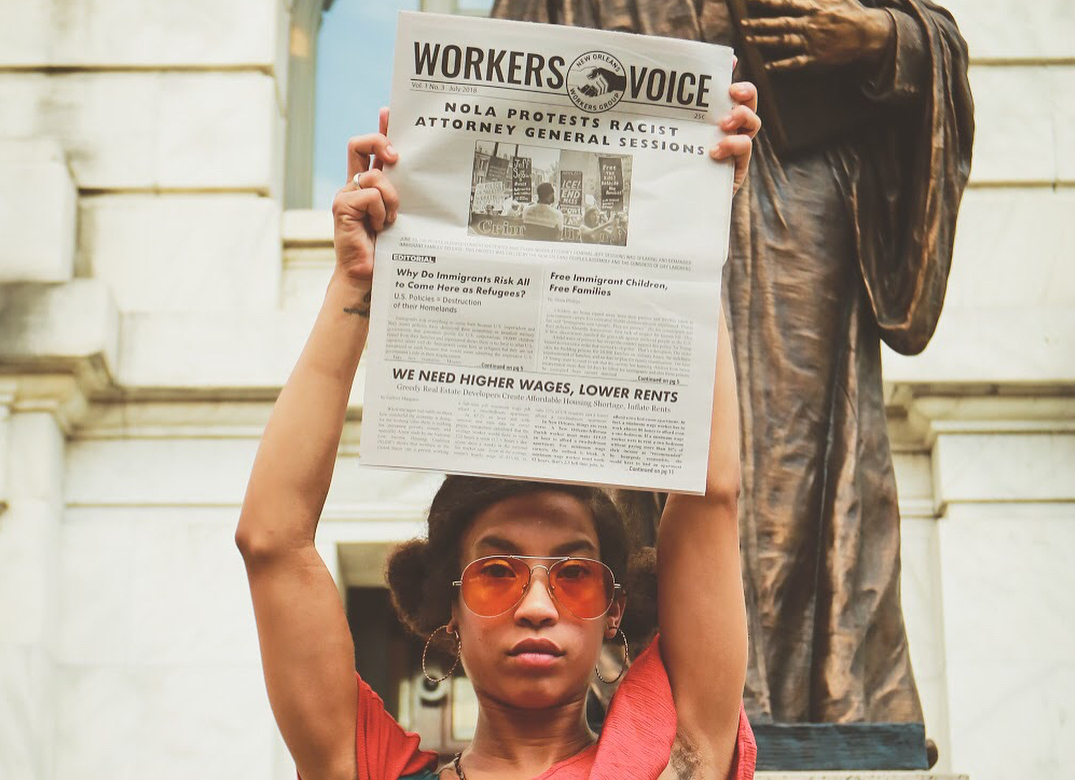By Malcolm Suber
Many of our readers will be surprised to learn the history of a militant, multi-national, anti-capitalist, industrial union active in Louisiana over 100 years ago. At its high point the BTW had 30,000 members who openly challenged the capitalist class and fought to achieve working class unity. The BTW was a union of sawmill workers from east Texas and southwest Louisiana that was organized by Arthur Lee Emerson and Jay Smith in 1910. The BTW was best remembered for the Grabow uprising when the workers went on strike against the Galloway Lumber Company in Grabow, Louisiana. The BTW was also notable for the fact that they were an anti-racist union in the deep South, where segregation and Jim Crow were the order of the day.
The BTW was created because of the terrible working conditions at the sawmills in the southern piney woods region. The sawmill work was dangerous and depended on the ability of the worker to keep up with the machinery. In 1909, there were a reported 125 deaths and 16,000 accidents in the southern lumber industry.
In 1910, Emerson and Smith began to recruit members for the BTW. They moved from camp to camp to recruit hundreds of black and white sawmill workers. Interest grew rapidly and workers flocked to the BTW. The BTW held its first convention in Alexandria, La. At the conference they adopted their constitution that extended membership to all races and sexes.
The creation of the BTW immediately drew the attention of the capitalist owners of the Southern Lumber Operators Association. They vowed to kill the BTW in its infancy. In 1911, the SLOA shut down 11 mills in De Ridder, LA. Members of the BTW were blacklisted. In order to work again, they would have to sign an anti-union card. Most workers refused and the BTW became stronger.
In 1912, the BTW held its second annual convention in Alexandria, LA. “Big Bill” Haywood of the International Workers of the World (IWW) was the main speaker. Haywood noticed that the black and white workers were meeting separately in accord with Jim Crow law. He called for breaking the segregation law and having one joint meeting. It was here that the BTW voted to affiliate with the IWW.
The SLOA criticized the BTW as an anarchistic, race-mixing organization in an attempt to weaken support among white workers. After affiliation with the IWW, the BTW presented the lumber operators with a list of demands concerning higher wages and improved safety that led to more lockouts and the importation of scab labor. The SLOA brought armed guard along with the local sheri s to protect the scabs. This set the stage for the Grabow uprising.
On July 7, 1912 A.L. Emerson led a group of strikers toward the King-Ryder Mill. Upon hearing about an assassination attempt on H.G. Creel, a socialist organizer, they changed course toward the Galloway Mill in Grabow , LA. On arriving, Emerson began to speak to the strikers when shots were red from the company office. This sparked a gun fight between the company gunmen and the armed union members. It was reported that 4 workers were killed and 37 others wounded as a result of the battle.
Following the incident, 49 union men and their officers were arrested and faced charges of rioting. After a vigorous campaign to declare their innocence, all 49, including Emerson, were acquitted. This victory was the high point in the history of the BTW. However, the trial depleted their finances and drained their membership.
The BTW was a step forward for the working class struggle against the capitalist class. It was a fundamental challenge to the rule of capital as it championed working class unity, racial and sexual equality in a time when racism and sexism were widely accepted by the US working class.
